With the new releases from Adobe, DXO Labs and Phase One, I’ve decided to put to the test some of the top RAW processors. These are:
- Adobe Photoshop Lightroom 1.3;
- DXO Pro Optics Suite 5;
- Capture One 4.
I would have wanted to also test Apple Aperture 1.5, but it wasn’t possible at this time, so, I decided to postpone that test.
These programs represent the high-end segment of the RAW converters, since they are all geared (or at least marketed) as tools for professional photographers. This doesn’t mean that Bibble, Silkypix or ACDSee Pro are not capable, it’s just that they have a different market.
Of course, their features and intended uses do not overlap completely. Lightroom in particular is billed as a DAM (Digital Asset Management) software, whereas DXO has extended features in term of image geometry correction. Still, I’ve tried to judge all three of them fairly and bring the best out of each one, rather than trying to prove a point.
Interface
All three programs have similar interfaces. It would be definitely unfair to say that any of them copied the other. They all employ a dark, monochrome look that is essential in avoiding misjudging colors, and they all use collapsible side-panels.
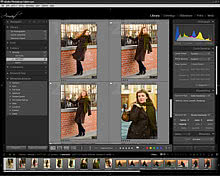 | 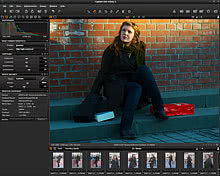 | 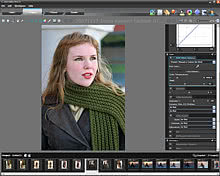 |
| Lightroom | Capture One | DXO |
Unsurprisingly, Lightroom has the most complex interface. It has five tabs on the right, called Library, Develop, Slideshow, Print, and Web as well as panels on the left and right. The nice thing about its interface is that all of them can be hidden, including with an auto-hide option, allowing for a very efficient management of screen estate. Moreover, in the “lights dim” mode, the interface is faded, allowing the user to further concentrate on the photo itself.
DXO has a more workflow-oriented interface, with four main tabs called Select, Prepare, Process and Review. Its focus is on the Prepare tab, dedicated to adjusting the image. On the right side there are a number of panels stacked one on top of the other (similar to Lightroom) that can be also quickly accessed via the icons on the top right, although I still find them a little confusing due to their number and location (e.g. the White Balance is somewhere in the middle).
Capture One takes a different approach. It doesn’t want to be a DAM, but a very fast RAW processor. It has some quick tools at the top and some tabs on the left (Library, Quick, Exposure, Color, Details, Crop, Metadata, Adj. Clipboard, Output and Batch). The first tab lets the user select the files from the drive and then the next tabsset different processing parameters. With the Quick tab and the Copy/Paste settings tools at the top, adjustinting settings is very fast and efficient.
Features
Of all three, Lightroom is certainly the most ambitious. Its image management features allow for thousands of photos to be maintained by the Library and retrieved with ease. Still, the library management is rather slow compared to dedicated programs such as ACDSee. Even with that, Lightroom has plenty of other features to keep one happy. For example, the History tool allows the photographer for unlimited undo since all edits are non-destructive while snapshots and virtual copies lets one experiment with different looks. Web Slideshow and Print Management are nice perks too, although not essential.
DXO has different strengths. Its image management features are minimal, yet it shines in a different area: geometry correction. Having separate profiles for each camera/lens combo, DXO can automatically correct distortion, chromatic aberration, purple fringe and softness. Actually, DXO will automate many things: noise reduction, shadow/highlights and more. Features like keystoning and volume anamorphosis corrections are not only impressive, they are essential especially for architectural or wide-angle shots.
Capture One represents a huge improvement over version 3, but it has a different philosophy. It reminds me a little of RAWShooter – very small, very fast, allowing for quick corrections. It has less options, but they are arranged so that it’s extremely easy to correct and process hundreds of photos. It too has a Variants feature but lacks advanced color correction, a “healing brush” and other features present in its competitors.
Color Rendition
Camera sensors differ from one model to the other; most RAW processing software use their own camera color profiles, so it’s not surprising to get different colors out of the same picture by using different programs, even when leaving the white balance, contrast and saturation to “as shot”.
In my tests I’ve tried to get the best colors out of each picture, rather than relying on defaults. Below are some photos processed with each of the programs:
Nature
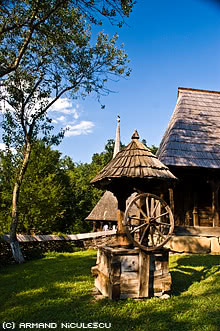 | 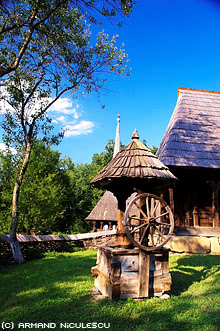 | 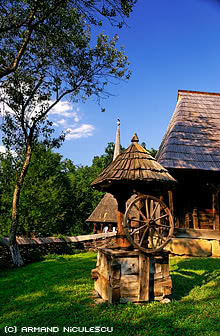 |
| Lightroom | Capture One | DXO |
In all nature shots, I noticed Lightroom’s tendency to produce yellowish greens. Here, without a doubt, DXO produces the best image without even trying (it was on default settings), whereas I couldn’t get the same look in the other two even after many tweaks. Capture One fared the worst with unnatural colors (see the blueish shadows on the roof).
Illustrations
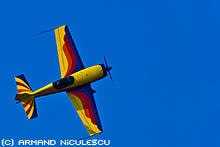 | 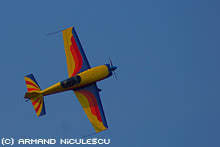 | 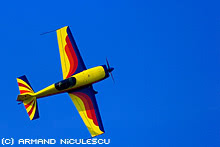 |
| Lightroom | Capture One | DXO |
This is a more extreme case. In order to get a nice blue sky, I’ve used the Vibrancy control to enhance the colors. Capture One doesn’t have the vibrancy feature, so I had to rely on plain old saturation, with disastrous results. Lightroom and DXO produced virtually identical photos, with DXO having a slight edge.
Portraits
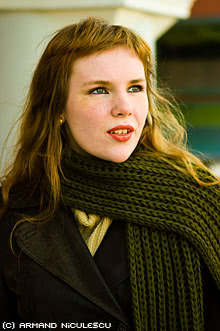 |  | 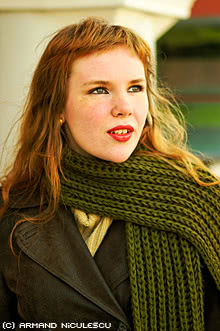 |
| Lightroom | Capture One | DXO |
Here DXO misses by automatically applying too much of its “lighting effects”, which is a Shadow/Highlight recovery control (it can be turned off but I left it on for this photo to illustrate how sometimes too much automatic control can degrade a picture). Capture One creates a more natural-looking image, but overall Lightroom renders the most pleasing photo. Also notable is that Capture One is the only one missing a healing brush, which was used on the girl’s face in the other two images. The absence of this tool is not really a big deal, but it would have been nice.
Sharpness, noise and dynamic range
Now lets look at the level of detail provided. Note: to avoid any compression artifacts, details are presented in PNG format.
Detail and artifacts
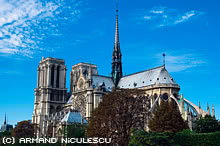 | 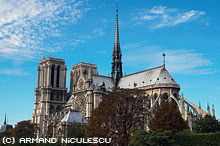 | 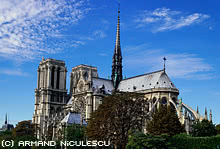 |
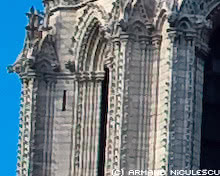 | 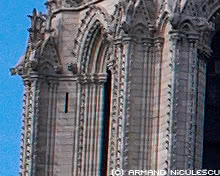 | 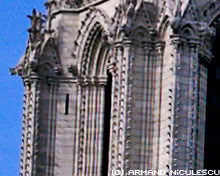 |
| Lightroom | Capture One | DXO |
Capture One doesn’t have any chromatic aberration control, which is responsible for the vertical blue line. I was very surprised and disappointed by DXO performance; even though it boasts a new processing engine designed specifically to avoid these kind of situations, it still produces some rather ugly color artifacts while at the same time looking not sharp enough. The only way I could remove them was by increasing the color noise reduction, which in turn would have negatively affected other areas of the picture. Lightroom provides a sharp, clean and detailed image, clearly the best.
Light and shadows
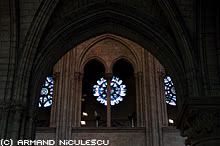 | 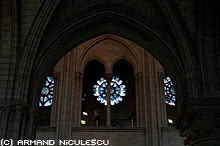 | 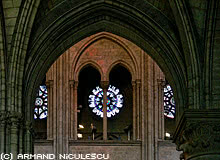 |
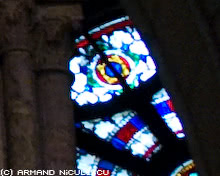 | 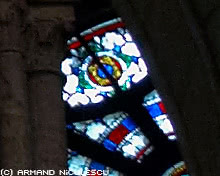 | 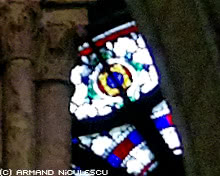 |
| Lightroom | Capture One | DXO |
Now here DXO gets to show its power. Its lighting control is more advanced than the Fill Light present in Lightroom and Capture One, while the perspective correction (keystoning) capabilities allow for a superior photo. The shot was made at ISO800, 1/10s handheld, f5.6. Looking at the details, Lightroom and Capture One manage to create very clean images, although Capture One leaves some specks. The DXO version features more noise (to be expected in the shadow considering the extra processing) but also more detail. Annoyingly, DXO loses detail in the stained glass, which is peculiar since the brighter area of the photo shouldn’t have been affected.
Sharpness
Going back to the portrait above, lets see a 100% crop:
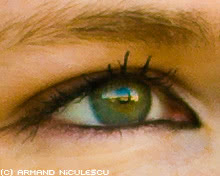 | 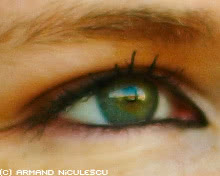 | 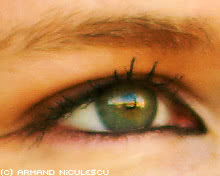 |
| Lightroom | Capture One | DXO |
I have “played” considerably in each program, trying to achieve the best possible results, but Lightroom manages the best balance between sharpness, cleanliness and noise.
Speed
Processing speed is dependent on many factors, including the processor, available memory, image size and amount of processing applied to it, making perfectly objective tests rather difficult. The numbers presented here are meant just for comparison.
Still, the fastest program is, without a doubt, Capture One, which is also impressive because it seems to be written entirely in C# (DXO is also based on .NET). On my laptop, the processing speed on capture One was 10 seconds/picture. In the second place, I had Lightroom, with 32 seconds per picture. I’ve tried to make things fair for DXO by removing all advanced processing such as lighting effect, geometry correction, even chromatic aberration and vignetting. Still, DXO came in last, with an atrocious 94 seconds spent for each picture, or almost 2 minutes per picture will all options activated.
Conclusion
In terms of output quality, the differences aren’t that huge and in some cases are more related to personal preference; all three tools are very capable of high quality output.
Of the three, Adobe Lightroom is the most consistent. It has a nice set of tools and features, solid results and few weaknesses. It’s integrated features allow the photographer to do all their work, from start to finish, in one program, in many cases with no need for Photoshop or other tools.
DXO is a mixed bag. It produces great colors, especially for nature and its geometry correction tools are a real life saver. On the other hand, it’s very slow, rather very unstable and just not great in terms of processing details. [Edit: I’ve thought initially that there must be something wrong with my computer but then I’ve found out on forums that many people complain about DXO 5 stability issues; for me, it crashes 80% of the time, when doing simple things like zooming in or applying sharpness.]
Capture One seems like a very nice “quick” tool. Even though it’s a beta, it’s fast in all areas (UI, workflow and processing), polished and stable. The pricing is also very attractive – just $130 compared to about $300 for the competition.






19 Responses
Very nice work indeed! I agree with you that LR is overall slightly superior. Although in my (slow) machine editing performance is cluttered because controls are not so responsive.
A comparison to Bibble and Silkypix will be welcome too.
Nice job… 🙂
Much appreciated. I don’t know Capture One at all, but I agree with your findings concerning DxO and LR. I use both, i.e at least I try to use DxO 5; it’s just soooo unstable, hardly usable. When it does manage to get to the end of the correction process without crashing or rebooting my notebook, I’m astonished at the level of improvement it manages to get done with my pics although my camera/lens combinations aren’t supported at all. I use a Pentax K10D which is on the list and a LX which isn’t (obviously), but I don’t have any of the (only) THREE lenses they have modules for. LR I like very much, but I’m really p***s at the moment because of the problem I’m having with my PEF (Pentax RAW) files since version 1.3 (and 1.3.1). The pink tint on all pictures “developed” with the “Pentax 1.0 profile” is really annoying. Hope Adobe gets this sorted out soon…
So for the moment I’m in love with two very different ladies that have both decided to turn their back on me… 🙂 🙁
Sometimes I do miss Raw Shooter Pro…
Well, on the up side this leaves me with more time for the one lady in my life, that I really care about… 😉
Cheers,
Michael
Just a note about the prices: Capture One LE goes for $99, and it contains all the features most of us need – Pro version (which doesn’t exist yet, the beta is for LE) adds things such as tethered shooting, digital back support and CMYK TIFF output, so feature-wise LE is probably closer to two others.
I stand corrected. I’ve looked at the site and I was misled by the pricing page. At $99, C1 is great value for money; I’ll update the post ASAP
Now that Capture One Version 4 has been formally released it would be interesting to know your findings with the production version.
Also Bibble Pro 4.9.9b is the latest build offered for the Windows OS version of that program. It would be informative to read your findings of that program’s capabilities in the same scenarios as you reported in your original post. Particularly, as Bibble Pro’s features are quite capable in all the areas you covered in your initial report.
Great comparison.
I really find the integrated aspects of Lightroom to be the tipping point for many photographers that I talk to. Its a great time to be a photographer.
Unfortunately DxO v.5 Pro does not recognise Pentax .dng files at all, and when presented with a .pef file made with a ‘supported’ lens does not recognise the lens. It is unfinished software.
I’ve been using DXO since version 1. I do a lot of Real Estate photography with the Canon 10 – 22mm wide angle lens. The keystoning controls are extremely useful for both exterior and interior shots. Also I couldn’t do without its sophisticated lighting control. It makes it possible to uses fewer flashes. DXO evens out the light and dark areas of the room remarkably well. (Your cathedral above is a good example.)
I have not upgraded to version 5.1 yet because I have found that they rush the new versions to market and there are lots of problems and glitches with them when they are new. Eventually they fix them, so I will wait for 5.2 or 5.3. The Help they offer is friendly and they are pretty fast to respond, but they are not knowledgeable and often give out wrong or incomplete information–or simply don’t know the answer. Documentation is also very poor. It’s frustrating to deal with them, but I am a committed, loyal user and the program improves my photos tremendously.
PS The price for the standard version which is what most people would use, is $169, not $300. You do have to have the right camera/lens combination–mostly Canons and Nikons. At the moment they are very slow in adding non-Canon lenses to the Canon 40D lens lineup–like the Sigma 18 – 200 that I own. That’s another problem. What if they never add the lens? You’re at their mercy as to whether the lenses you own will be supported in the future, or not.
There is some improvement in v. 5.04. my ‘supported’ DA* Pentax lenses are now recognised.
I have used DXO 4 and DXO 5.0.1 on the strongest computer I have (a Dell Precision 670, 2 GB RAM) and I got dissappointed with DXO 5 regarding its performance. You need a dual/quad core CPU for this SW, a 3.6 GHz Xeon with 800 MHz FSB is not enough.
I also had stability problems with it: it crashed patching, then would not accept its own update, claiming that I should close DXO first… (and their support response was a link to the frequently asked questions, suggesting that I have a look there.)
In short, the DXO team should have spent more time on bugfixing a perf. tuning this thing.
Yes, I agree with the last poster: even v. 5.04 is beta software, but without the usual interaction with the testers. Among other defects it is glacially slow.
I have the fastest quad-core CPU made plus 3GB RAM on a stable WinXPProSP2 OS.
I’ve been using Capture One 4 for a little while and I’m really enjoying it.
I find it’s well-organized, easy to use, and gives a good result. I do like the
colors I get through my OEM processor (Pentax PhotoLab, which is SilkyPix)
better than C1, but now that I’m used to the basics of the program I’m going
to try and set a camera profile for my Pentax K100d into C1 and see if
that narrows any discrepancy. I’m glad I have C-One 4.
Excellent review! As a pro photographer I am always looking at ways to accelerate my workflow and produce the best looking pictures with low involvement.
I currently use DXO 4.51 and ACDSee (for photo management) and of course Photoshop.
I am consitently impressed by DXO – I now only use Photoshop for special filter effects.
I am very interested in Lightroom and you article was a real eye opener.
Thanks!
DxO 5.1 just released is much better in most ways, and does recognise Pentax .dng files.
I’ve had lots of crashing issues when trying 5 beta, but been fairly stable now that 5.2.1 is out. as for processing speed, it does a photo in something like 15 seconds on a Core2Quad Q9300 on Vista with 4GB of RAM, so I can’t complain.
I’m not a big fan of the workflow though… still think there’s a lot of room for improvement there.
Yes, 5.2.0.7009 produces marvellous IQ.
Hi, isn’t life strange? My RAW convertor of choice 2 years ago was Capture One but got sidetracked last year by the added functionality of Lightroom and as of today, I am being sidetracked again in experimenting with DxO. So it’s interesting to hear others views of these and, like Armand, think each has got strengths. Like others views I have read elsewhere I’m tempted to use DxO as part of my Lightroom workflow. So would be interested in others views.
Good review, thanks.
A few updates from a Mac user.
I’m using Capture One for about 2 years now. First 3.7 LE, now the version 4 (Windows and Mac)
I was always happy with the results of this software, plus it’s incomparable stability and speed.
I’ve decided to give a shot on DxO 5.2 demo on my MacBook Pro Core 2 2,5GHz 4GB RAM.
DxO is just slow… Very slow…
And on every 5 pics I work on, it will hang and I need to kill the process.
On the image quality produced, removing the extras from DxO (all geometry and lens conversion), there was nothing I could not reproduce with Capture One. But I will not give up and try some more, as well give a shot to Lightroom. But since LR does not include lens fix, why should I give up my Capture One I’m so happy about!
But a “tip”. For the entire lens correction missing on LR/CapOne. I’m using a very cheap tool, PTLens. Pity only works on JPEG, so you need to convert before, and use this tool after to do your horizon, cropping, perspective, cromatic aberration, vignetting etc.
I think it’s worth a try!
PT lens DOES work on Tiff files.
Comments are closed.